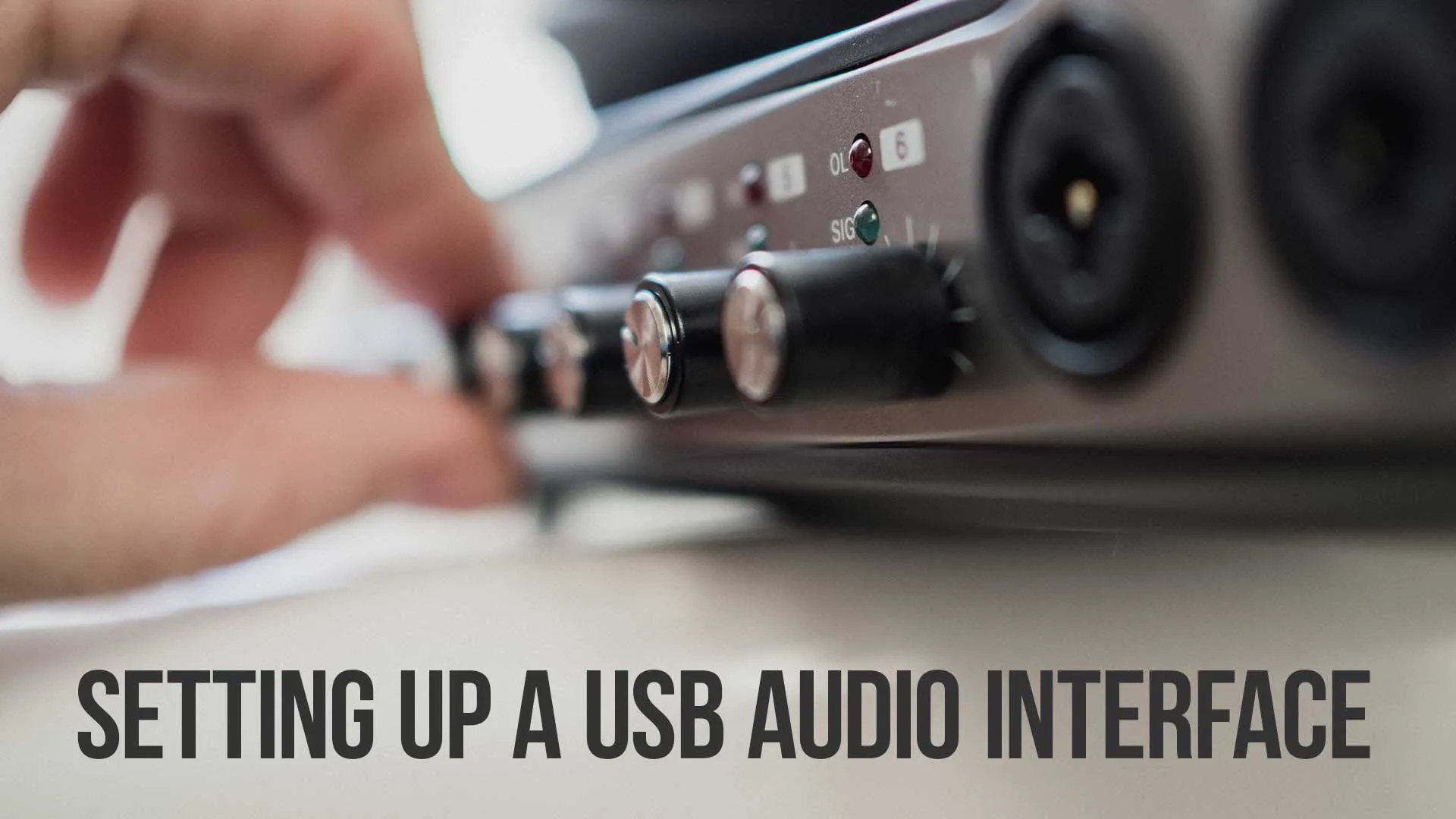A USB audio interface is a device that allows you to connect instruments, such as electric guitars and synthesizers, to your computer.
With this setup, you can record and produce music, as well as perform live with a digital audio workstation (DAW).
In this article, we will provide step-by-step instructions on how to set up a USB audio interface.

What is a USB Audio Interface?
A USB audio interface is a device that connects your musical instruments to your computer, allowing you to record and produce music.
This type of interface typically includes a combination of inputs and outputs, including microphone inputs, instrument inputs, and line-level inputs.
They can also have built-in preamps, which provide additional power and control over the audio signal.
Why Use a USB Audio Interface?
There are several reasons why you might want to use a USB audio interface, including:
- Improved Sound Quality: USB audio interfaces often have built-in preamps, which provide additional power and control over the audio signal. This results in improved sound quality compared to the built-in audio inputs on your computer.
- Increased Input Capabilities: A USB audio interface provides more inputs than your computer’s built-in audio inputs. This allows you to connect multiple instruments or microphones at once, making it easier to record and produce music.
- Improved Latency: Latency refers to the time it takes for an audio signal to travel from your instrument to your computer and back again. A USB audio interface can reduce latency compared to the built-in audio inputs on your computer, making it easier to play in time with a DAW or other software.

What to Look for in a USB Audio Interface
When selecting a USB audio interface, there are several key factors to consider, including:
- Number of Inputs: Consider how many inputs you need for your setup. If you are recording a full band, you will need more inputs than if you are just recording a single instrument.
- Quality of Preamps: If you plan on recording with a microphone, it’s important to select an interface with high-quality preamps.
- Latency: As mentioned above, latency can be a critical factor in your setup. Make sure to select an interface with low latency.
- Supported Operating Systems: Make sure the interface you select is compatible with your operating system.

Setting Up Your USB Audio Interface
Once you have selected a USB audio interface, follow these steps to set it up:
- Connect the interface to your computer via USB.
- Install the driver software that came with the interface. This software is necessary for the interface to communicate with your computer.
- Open your DAW or recording software.
- In the audio settings, select the USB audio interface as the input and output device.
- Connect your instruments or microphones to the inputs on the interface.
- Adjust the levels and settings as needed in your software.
- Start recording and producing music!
Conclusion
In conclusion, setting up a USB audio interface can greatly improve the sound quality and capabilities of your recording setup.
By following the steps outlined in this article, you can have your interface up and running in no time.
Whether you’re a professional musician or just starting out, a USB audio interface is an essential tool for recording and producing music.
Setting Up a USB Audio Interface FAQ
What is a USB audio interface?
A USB audio interface is a device that connects musical instruments or microphones to a computer. It acts as a bridge between your instruments and the computer, allowing you to record, mix, and edit audio on your computer.
Why do I need a USB audio interface?
You need a USB audio interface if you want to record music or audio on your computer. It provides a high-quality audio input and output, which is necessary for professional-level audio recording.
How does a USB audio interface work?
A USB audio interface works by converting analog audio signals into digital signals that can be processed by a computer. The analog audio signals are input through the interface's inputs (such as microphone or instrument inputs) and then converted into digital signals that the computer can understand.
What are the benefits of using a USB audio interface?
There are several benefits of using a USB audio interface, including improved audio quality, the ability to record multiple channels at once, and the ability to record at higher sample rates and bit depths.
What should I look for when choosing a USB audio interface?
When choosing a USB audio interface, you should consider factors such as the number of inputs and outputs you need, the quality of the preamps, and the compatibility with your computer and recording software.
Can I use a USB audio interface with a Mac or PC?
Yes, most USB audio interfaces are compatible with both Mac and PC computers.
Do I need special drivers to use a USB audio interface?
Some USB audio interfaces require special drivers to be installed, while others are plug-and-play and do not require any additional software. It is important to check the specifications of the specific interface you are interested in to determine if you need to install drivers.
Can I use a USB audio interface with mobile devices?
Some USB audio interfaces are compatible with mobile devices, but it is important to check the specifications of the specific interface you are interested in to determine its compatibility with your device.
What is the difference between a USB audio interface and an audio interface that uses Firewire or Thunderbolt?
It used to be that FireWire and Thunderbolt were faster than USB but now with USB 3 speeds they are all on par with each other. Use the type of interface that your computer has access to. There are less and less FireWire ports on modern computers, and Thunderbolt 3 uses the same port as USB 3.
How do I set up a USB audio interface?
Setting up a USB audio interface typically involves connecting the interface to your computer with a USB cable, installing drivers (if required), and configuring your recording software to use the interface as the default input and output device.

About the Author
Joseph Nilo has been working professionally in all aspects of audio and video production for over twenty years. His day-to-day work finds him working as a video editor, 2D and 3D motion graphics designer, voiceover artist and audio engineer, and colorist for corporate projects and feature films.
Pro Audio Production Related Posts
Top 9 Condenser Microphones for Recording Voice and Vocals
Best Microphones For YouTube Videos 2022
Best Gaming Headsets with Good Microphones
The Ultimate Guide to the Premiere Pro Essential Sound Panel
Best External Wired and Wireless Mics for iPhone
The Pros and Cons of Podcast Mixers
7 Best Audio Mixers for Podcasting in 2023
The 8 Best USB Audio Interfaces For Podcasters and Musicians 2023
- What Is A USB Audio Interface?
- Why Use A USB Audio Interface?
- What To Look For In A USB Audio Interface
- Setting Up Your USB Audio Interface
- Conclusion
Pro Audio Production Related Posts
Top 9 Condenser Microphones for Recording Voice and Vocals
Best Microphones For YouTube Videos 2022
Best Gaming Headsets with Good Microphones
The Ultimate Guide to the Premiere Pro Essential Sound Panel
Best External Wired and Wireless Mics for iPhone
The Pros and Cons of Podcast Mixers
7 Best Audio Mixers for Podcasting in 2023
The 8 Best USB Audio Interfaces For Podcasters and Musicians 2023
